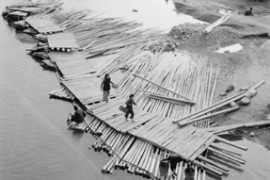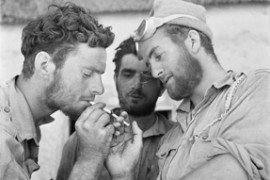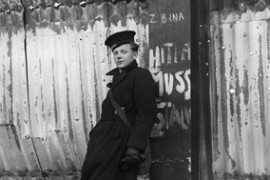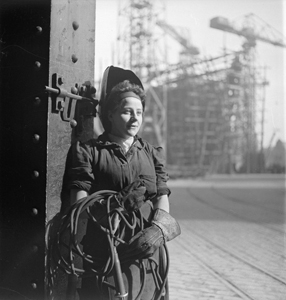
In September 2012 IWM London opens Cecil Beaton: Theatre of War, a major new exhibition exploring the impact of the Second World War on Cecil Beaton’s life and work.
Cecil Beaton (1904-1980) was a British photographer, designer, writer, cartoonist, diarist and socialite who loved theatre in all its forms. He is widely remembered as the leading British portrait and fashion photographer of his day, best known for his glamorous photographs of royalty and twentieth century celebrities. The fact that Beaton was one of Britain’s hardest working war photographers during the Second World War is less well known.
Commissioned by the Ministry of Information, Beaton took some 7,000 photographs between 1940 and the end of the war. These little known images show Beaton adopting new methods to create a body of work that he later considered to be his most important. From powerful, humanised portraits to abstract ruins, Beaton captured the war in a manner unlike any other photographer.
Inspired by his love of theatre, Beaton’s war time photographs, many of which will be exhibited for the first time in Cecil Beaton: Theatre of War, are masterpieces of composition and staging. He presents a carefully designed, perfectly composed image rather than the imperfect reality of candid reportage. The framing, layering, sense of scale, and use of lighting are carefully orchestrated, resulting in photographs of astonishing directness and intensity. It is not surprising that Beaton’s photography had enormous impact in wartime, attracting worldwide attention at times when Britain struggled to make its voice heard by other means. Throughout the Second World War, Beaton was the only photographer to be credited wherever and whenever his work was published.

The scope, range and quality of Cecil Beaton’s wartime photography is truly staggering. He travelled throughout Britain, the Middle East, India, Burma and China. He visited Europe, Africa and America. He photographed leaders and ordinary people, military and civilian life, industry and agriculture, artists and architecture. His photographs from the Far East, depicting deeply traditional communities on the brink of lasting change, are ranked among the best of his career.
Cecil Beaton’s wartime work extended beyond photography. A talented diarist, he wrote down his thoughts and impressions as he photographed, filling numerous notebooks with his almost undecipherable handwriting, and drawing on them for a stream of wartime articles and books. Simultaneously, he explored new opportunities in film and theatrical design. Cecil Beaton: Theatre of War will display the full range of Beaton’s wartime work for the first time, giving visitors a true understanding of his extraordinary wartime achievement.

Finally, the exhibition will examine how the war affected Beaton personally and offer a new insight to the man. Often regarded as temperamental, self indulgent and thoughtless, Cecil Beaton earned the respect of those who met or worked with him during the war. Despite a complete lack of military prowess, he was undeterred by discomfort, difficulties and brushes with death, including a major air crash, dengue fever, dysentery, a septic leg and the bombing of his London home. He emerged from the war with a new found maturity and confidence which informed his postwar career.
When it ceased wartime operations, the Ministry of Information deposited Beaton’s war photography with IWM London. Beaton was briefly reunited with the collection shortly before his death. He wrote in his diary;

‘Yesterday I went to the Imperial War Museum, not my favourite place, to see the collection of photographs that I had taken during the war for the Ministry of Information… It was an extraordinary experience to relive those war years; so much of it had been forgotten, and most of the people are now dead. It was fascinating to see the scenes in old Imperial Simla, the rickshaws drawn by uniformed servants, the grandeur of the houses, the palaces, the bar scenes, the men on leave swigging beer, I had not realised that I had taken so many documentary pictures, some of purely technical interest. Looking at them today, I spotted ideas that are now ‘accepted’, but which, thirty years ago, were before their time. The sheer amount of work I had done confounded me.’
Cecil Beaton, Imperial War Museum, Lambeth, January 12th 1974
Admission: Adults £8, Concessions £6, Children (aged 15 and under) Free. Box office 020 7416 5000, tickets are also available online, please visit: www.iwm.org.uk




